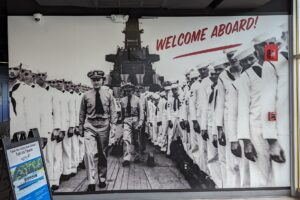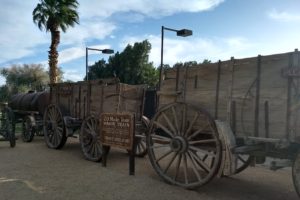What a perfect activity on a rainy, chilly day: walking through a lovely downtown museum and seeing so many sides to New Brunswick. Our first stop was the coatroom—only in the northern part of the nation! So glad we didn’t have to carry our jackets around with us.

agriculture

In reality, farming output and the value of this domestic output was worth over 1-1/2 times that of the lumber industry during this time! This work meant cash in the pockets for the farm families and signaled the beginning of the end for the barter or trade in goods systems.

Good pastureland also meant an increase in herds of cattle for meat and dairy production and sheep for meat and wool. Later in the century, apples and fruit such as blueberries were cultivated.


Farming, like lumbering, followed a time sequence based on natural cycles of weather and available daylight.
lumber industry

Trees are everywhere in New Brunswick once you get away from the coast, and the lumbermen were looking at forests that had never seen an ax. Primary use for these trees? First they sent them back to England that had little wood for building their own ships, and then they started building their own wooden sailing ships along the coast of the Bay of Fundy. The tall Douglas firs were especially wanted in England for the masts of ships.

Lumberjacks worked according to the changing seasons and available sunlight, not to the movement of a clock. They began felling trees in the fall after the farmer’s harvest and continued into the early winter. The broad ax and then the 2-man crosscut were used to bring down the pine, spruce, and fir. In the 1940s, the chainsaw replaced the slower system of cutting down trees.





moving lumber from the woods to the mill
The skidding crew worked a day behind the ax-men and the sawyers preparing trails through the woods and then hauling the logs and timber out. They first used oxen but then found horses easier since they worked faster, took less time to feed, and were more manageable.

After the rough lumber was measured for what the lumber company wanted, piles of logs, or skidways, were made—some containing up to 350 pieces.
By now it would be late December or early January, and the teamsters took over to take the logs to a waterway to get to the mills. We found this next process so interesting.


These logs were taken to the river banks until the spring thaw.
spring thaw

These drivers “rode” the logs down the rivers and would make camps as they traveled.

As the logs came down the feeder rivers and brooks into the main waterways, they were corralled in coves and inlets. In these areas, the men would need to move the logs around, so they would build “booms” over them.


Several dozen lumberjacks would stand on the sides or on the crosspieces, each with a long pike pole, and would separate the logs based on the company mark or stamp, guiding them through to the hitching ground where logs with the same brand were gathered into “rattlings” (25 or 30 logs each, side by side). These rattlings were the building blocks for timber rafts that were the final leg of the journey to the mills.
While cutting the trees was a winter job, and moving the trees was a late spring job, milling was a summer job.

At the beginning of the 19th century, most NB mills were small, water-powered operations producing boards and other products for local markets. After 1850, mills became larger, were converted to steam power, and were concentrated in port communities for exports to the United Kingdom and the United States. This changed at the turning of the century with the building of railways that could go to the timberland and bring the logs out.
small boats on the waterways



fishing



Fishermen would begin at the Reversing Falls where the Saint John river meets the Bay of Fundy as the tide was beginning to turn and would set their net and drift out through the harbor. Eventually these skiffs had inboard and then outboard motors. This skiff had neither and was propelled by oars and dates from about 1945.
the golden age of sail

So much goes into building a sailing ship that would take from 12 to 18 months to complete.
working on the curve






making the sails

So you’re probably wondering why I’m including this next picture of a sail with these ropes hanging from it. Good question. I’m reading a Tom Clancy book, Debt of Honor, that I hadn’t read when it was published. One of the characters “reefed up his belt” to tighten it since he had been onboard a submarine so long that he had lost weight. I didn’t know what this term meant, so I asked Barney since he loves to sail.

men who built the ships
While many who worked in the shipyards were unskilled laborers, others were specialized craftsmen who had learned their trades as apprentices. A shipyard gang could number 50 or more workers. Many were employed by the shipyard, while others were contracted to craftsmen based offsite. Overseeing everything was the shipwright, or master shipbuilder—the one who earned the praise or took the blame for the final product.


ship launching
Saint John was the leading center of shipbuilding in the province.

During this era, their billowing canvas was seen the world over and helped make Canada a key player in the shipbuilding industry.

Launchings were gala affairs as people flocked to see the impressive spectacle of a ship hitting the water for the first time.


onboard ship
This was hard, dangerous work for the sailors. Food was usually poor, and living quarters were damp, cramped, cold in winter, and suffocating in summer.

Often the captain’s wife and family, until school age, would join him.


The captain’s family may accompany him, but the sailors didn’t have that privilege. Despite their hardships, many sailors returned to the sea for it was the life they knew.
families at home

Many campaigned to improve both the working conditions and behavior of seamen aboard ship.

sailing and the local economy



fortunes were made


From a video we learned that in the mid-1860s after the American Civil War, the United States wanted to replace the third of its sunk ships, but Canadian shipbuilders decided not to replace their ships. Instead they got into the shipping business themselves and became prominent in that venture.
When steam engines and steel ships began being built around the turn of the century, the wooden ship builders made a calculated decision not to make these new ships. The makeover would take too much money and a whole new type of men would be needed with entirely new skills. Instead Canada decided to branch out into new economies that would be needed in the next century, like banking.
In the next post we’ll walk through the rest of the museum. But now it’s time for some lunch and a picture of moose #2.

Now let’s see a different part of the museum.




